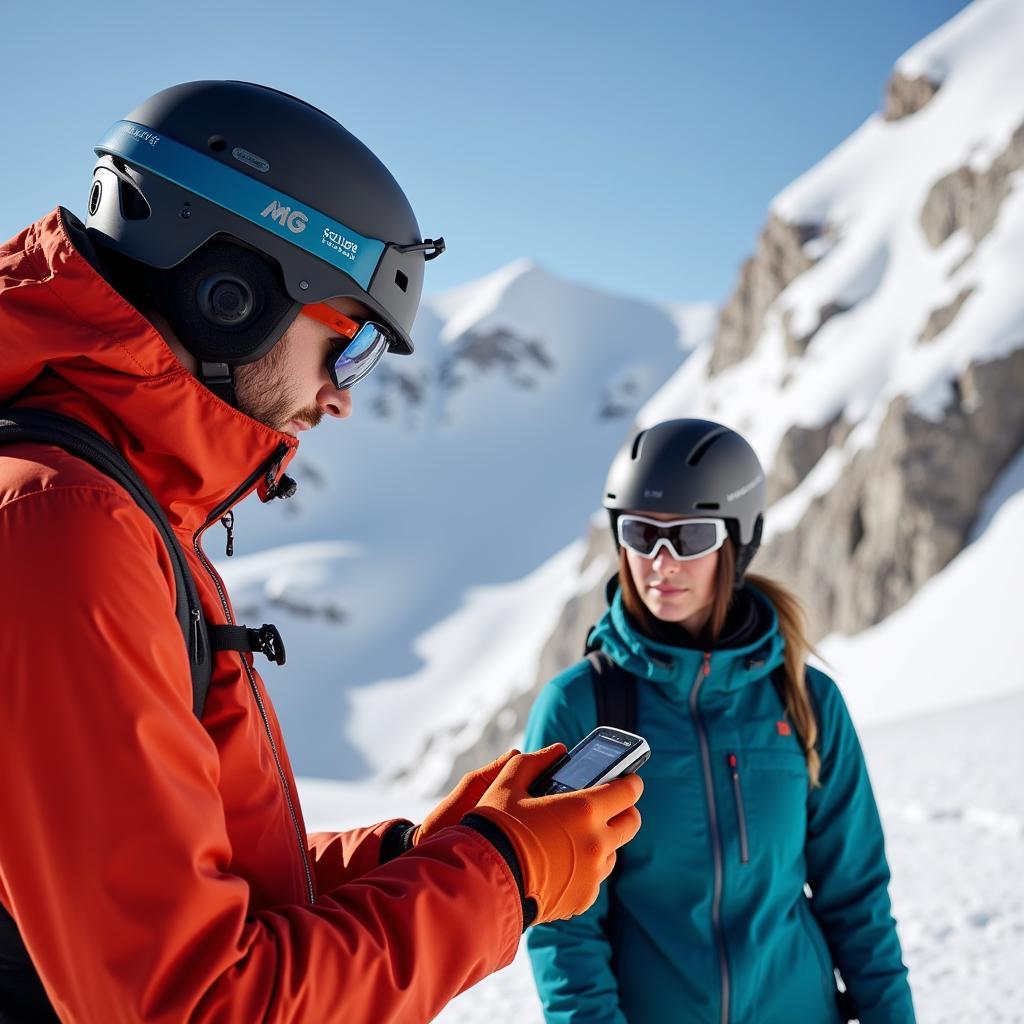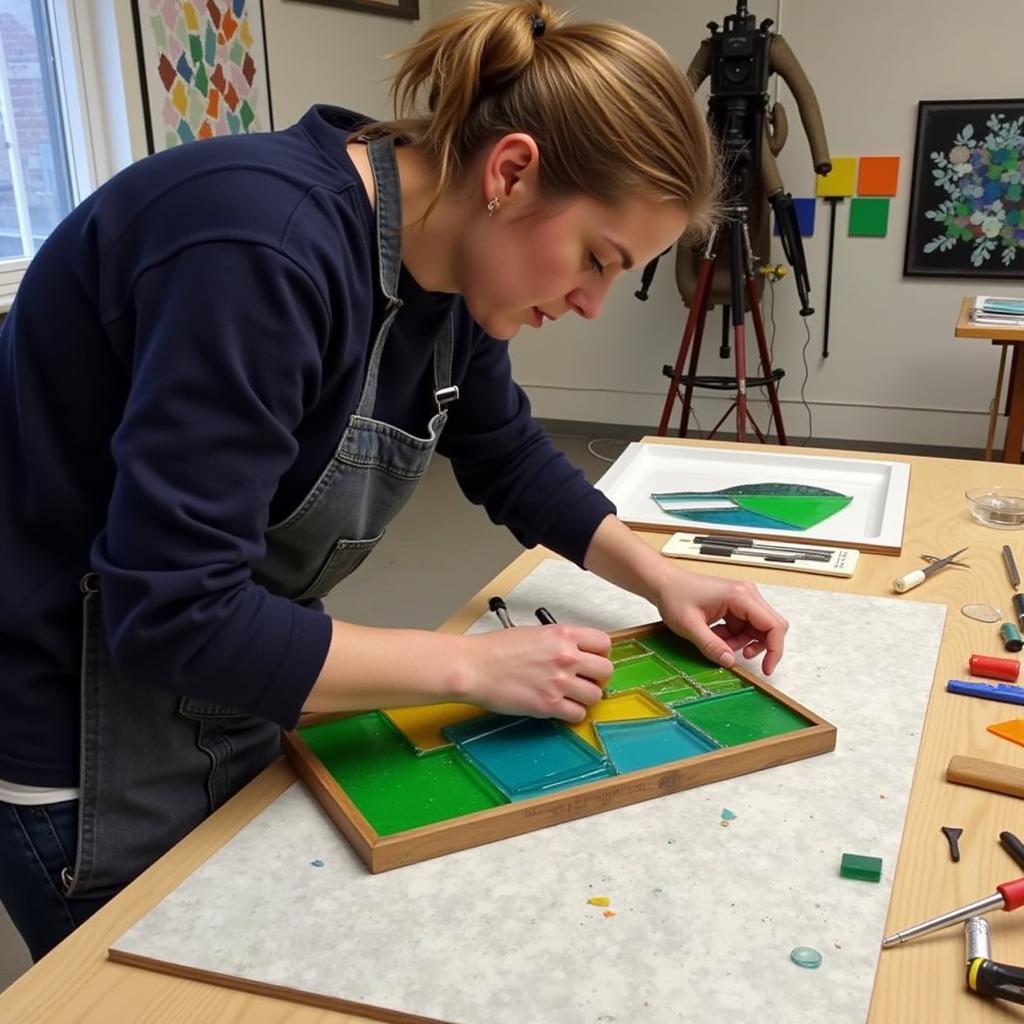Mastering the Art of Shralpinism
The Art Of Shralpinism, a thrilling blend of ski mountaineering and steep skiing, is gaining traction among adventure seekers. It’s about more than just conquering peaks; it’s about experiencing the mountains in their rawest form, pushing boundaries, and embracing the freedom of untracked descents. This exhilarating pursuit demands both physical prowess and technical skill, blending the uphill challenge of ski touring with the adrenaline-pumping descent of extreme skiing.
Understanding the Nuances of Shralpinism
Shralpinism sits at the intersection of backcountry skiing and mountaineering. It requires a deep understanding of snow conditions, avalanche safety, and route finding, along with expert skiing ability. Unlike resort skiing or even traditional ski touring, shralpinism often involves navigating complex terrain, including glaciers, couloirs, and steep, exposed slopes. This elevates the risk and demands a higher level of preparation and expertise. It’s not just about getting down; it’s about the entire journey, from meticulous planning and the challenging ascent to the rewarding descent.
Essential Gear for the Art of Shralpinism
Choosing the right gear is crucial for a safe and successful shralping experience. Lightweight yet durable skis, bindings designed for both uphill and downhill travel, and a well-fitted avalanche safety kit are just the starting point. You’ll also need appropriate clothing for varying weather conditions, including layers for insulation and protection from wind and precipitation. Navigation tools, such as a GPS and map, are essential for route finding, especially in unfamiliar terrain. And don’t forget a helmet – your most important piece of equipment.
Honing Your Skills for the Art of Shralpinism
Shralpinism isn’t something you jump into without proper training. Start by building a solid foundation in backcountry skiing and mountaineering skills. Take avalanche safety courses and practice using your safety equipment regularly. Work on your ski touring technique to improve efficiency and conserve energy for the descent. And most importantly, learn how to assess snowpack stability and make informed decisions about route choices. Gaining experience in less challenging terrain before tackling more technical routes is key to minimizing risk.
Safety First: Minimizing Risks in Shralpinism
While shralpinism offers an incredible sense of freedom and adventure, it’s important to be aware of the inherent risks. Avalanches are a significant concern, and proper training and equipment are essential for mitigating this danger. Weather conditions can change rapidly in the mountains, so being prepared for unexpected storms and temperature drops is crucial. Navigational errors can also lead to dangerous situations, so always carry a map and compass and know how to use them. Finally, be honest with yourself about your abilities and choose routes that match your skill level.
 Prioritizing Safety in Backcountry Shralpinism
Prioritizing Safety in Backcountry Shralpinism
Exploring the World Through Shralpinism
Shralpinism opens up a world of possibilities for exploring remote and pristine mountain environments. From the jagged peaks of the Alps to the vast wilderness of Alaska, there are countless destinations waiting to be discovered. Each location offers its unique challenges and rewards, providing endless opportunities for adventure and personal growth. Whether you’re seeking adrenaline-pumping descents or the tranquility of untouched landscapes, shralpinism allows you to connect with nature in a profound way.
Finding Your Shralpinism Adventure
When planning a shralpinism trip, consider factors such as the difficulty of the route, the accessibility of the terrain, and the prevailing weather conditions. Research potential destinations thoroughly and consult with experienced guides or local experts. Remember that shralpinism is a demanding activity, so choose objectives that are appropriate for your fitness level and technical skills. And most importantly, be prepared to adapt your plans based on changing conditions.
“Shralpinism is about embracing the unknown,” says renowned mountaineer and ski guide, Amelia Stone. “It’s about pushing your limits while respecting the power of the mountains.”
Conclusion: Embracing the Art of Shralpinism
The art of shralpinism offers a unique and rewarding way to experience the mountains. It’s a challenge, both physically and mentally, but the rewards are immeasurable. From breathtaking views to the thrill of conquering challenging terrain, shralpinism is an adventure that will stay with you long after you’ve returned from the mountains. So, embrace the challenge, prepare thoroughly, and discover the art of shralpinism for yourself.
FAQ
- What is the difference between shralpinism and ski touring?
- What are the essential skills for shralpinism?
- What kind of gear do I need for shralpinism?
- Where are some good places to go shralping?
- How can I improve my shralpinism skills?
- What are the risks of shralpinism?
- How can I stay safe while shralping?
“Preparation is paramount in shralpinism,” advises veteran ski mountaineer, Jasper Holt. “Knowing your limits and respecting the mountain environment are crucial for a safe and successful experience.”
Need help with your next shralping adventure? Contact us at Phone Number: 02462573573, Email: [email protected] Or visit us at Savico Megamall, 7-9 Đ. Nguyễn Văn Linh, Gia Thụy, Long Biên, Hà Nội 10000, Việt Nam. We have a 24/7 customer service team.





